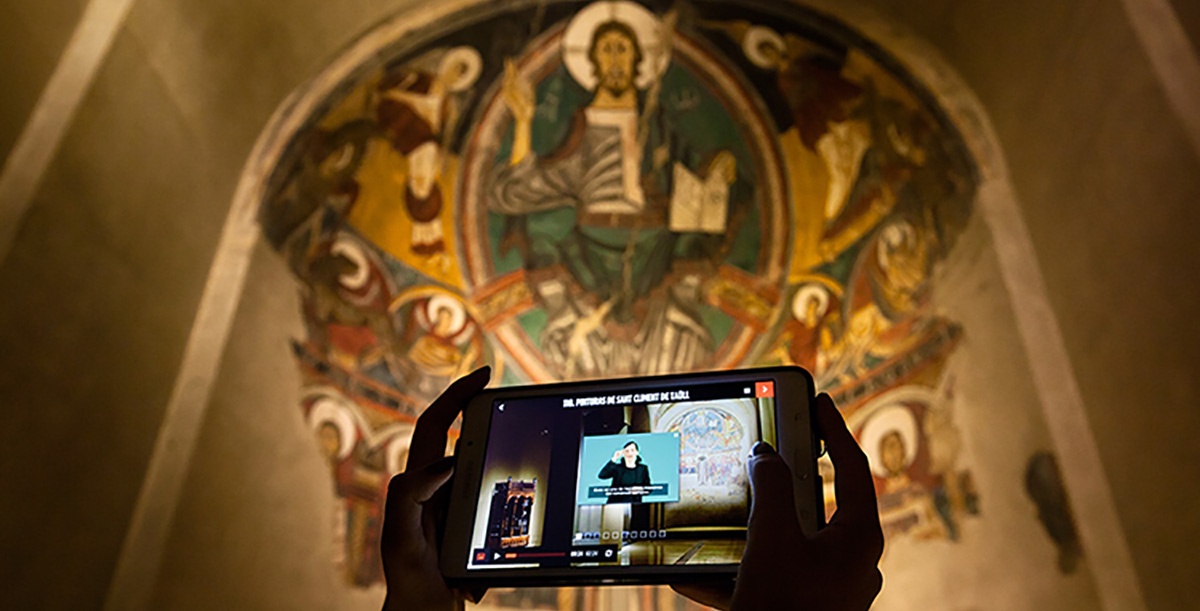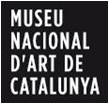Engagement Model, a new way of conceiving and managing museums and cultural spaces
Engagement Model, a new way of conceiving and managing museums and cultural spaces
A project involving the National Art Museum of Catalonia, the Tàpies Foundation, the firms Indissoluble and Mobile Media Content, and the Eurecat research centre and Pompeu Fabra University, as project leader. Engagement is part of the RIS3CAT Media Community coordinated by Eurecat.

During the exceptional confinement period, all museums and cultural centres have shown the need to remain in liaison with their users, expanding their contents by means of multiple digital resources and thus taking their culture to society. This is precisely one of the goals of the Engagement project, which proposes a paradigm shift in the way cultural spaces relate to their audiences.
By Engagement we refer to the ‘commitment’ by museums to their publics, understood as active participants. The project implements the concept of expanded museum, understood as a strategy based on individualizing and customizing the visitor experience, multiplying their narratives and go beyond the temporal and spatial boundaries of the museum, creating an ecosystem of digital content at their disposal. The aim is to generate new mechanisms and instruments that promote customizing the experience for each user, based on their interests, tastes, traditions and cultural backgrounds.
The project proposes a paradigm shift in the way museums and other cultural spaces relate to their audiences and adapt to changing needs and new expectations. Consequently, this prioritization calls for innovation in the processes of organizing museums and cultural centres.
It is a project which has brought leading museums such as the National Art Museum of Catalonia and the Antoni Tàpies Foundation, together with firms from the cultural and technological industries like Indissoluble and Mobile Media Content as well as the Eurecat research centre and Pompeu Fabra University, acting as project leader. Engagement is part of the RIS3CAT Media Community, coordinated by EURECAT, and has a budget of €1,642,949.26, co-funded by ACCIÓ.
Engagement improves the user’s qualitative experience
On the one hand, the project aims to improve user satisfaction and the user experience and promote their participation and commitment to the museum by developing new creative formats and enriching contents thanks to data generated by the public in their visitor experience and the interpretation they make of everything around them, by tracking and monitoring the user experience.
On the other hand, and thanks to the collection and analysis of the data generated, the institution gains new information to improve its services and the organization of its internal processes, both from the point of view of content and the uses it makes of its spaces, the institution’s marketing actions, and the activation of its works and collections, among others.
“Given that cultural industries are highly accustomed to preparing “finished” products, this new approach constitutes a change of habits with major consequences on the way of organization and the finances of their activities", the members the project explain.
The progressive digitalization of museums’ works and services will transform the organizational process, breaking the current segmentation between departments and spheres of activity. Engagement proposes a model that flows circularly, that feeds back from the visitors’ experience within the cultural space and brings about changes and improvements that the institution implements in order to adapt to the requirements of its publics and raise their degree of satisfaction. This model can be replicated and adapted to other museums and cultural institutions in Catalonia.
Engagement is an opportunity for museums, the multimedia content industry and technology companies in Catalonia to fully and dynamically complete their adaptation to the new environment of social and technological innovation management.
The Engagement Model acts on all stages of the experience related to the exhibits. Users can prepare and organize their visit, receiving the first positive impact to encourage their interest in visiting the museum (PRE); it will be able to expand and generate new content during the visit, with a unique offer, tailored to their interests, both as regards the narratives and the language used (DURING); as well as recover the visit to later relive the experience and make it lasting, thanks to the digital footprint, which will make it possible to return information to the user, framing the experience and making it memorable (POST).
The museum will be able to recommend itineraries for discovering the content that best adapts to the preferences of each user, as well as suggest additional content. Thus, thanks to the flow of information generated between the users and the museum, real engagement is achieved that creates a circular bond of relations, interaction and commitment. As Pepe Serra, director of the MNAC, puts it, “the museum should be a nice, quiet place with a different tempo for meeting with creativity and with others, for knowledge and ideas, but also for emotions and feelings”.
Moreover, the digitization process and the series of experiences will enable greater conceptual and experiential intensity of the expanded museum beyond physical presence. In the longer term, the expanded museum aims to activate diverse communities who may feel united through a virtual knowledge of the works and activities of the museum. As Jordi Balló, who is leading the Engagement project at UPF, explains, “this is a goal that the experience of confinement has brought to the forefront at museums worldwide, as an unavoidable need to create new, imaginative devices in this field”, which is one of the founding principles of a project like Engagement.
Project consortium:
|
|
|
|
|
|
|
|
|
|
|
|
|
|
|
|
|
|






